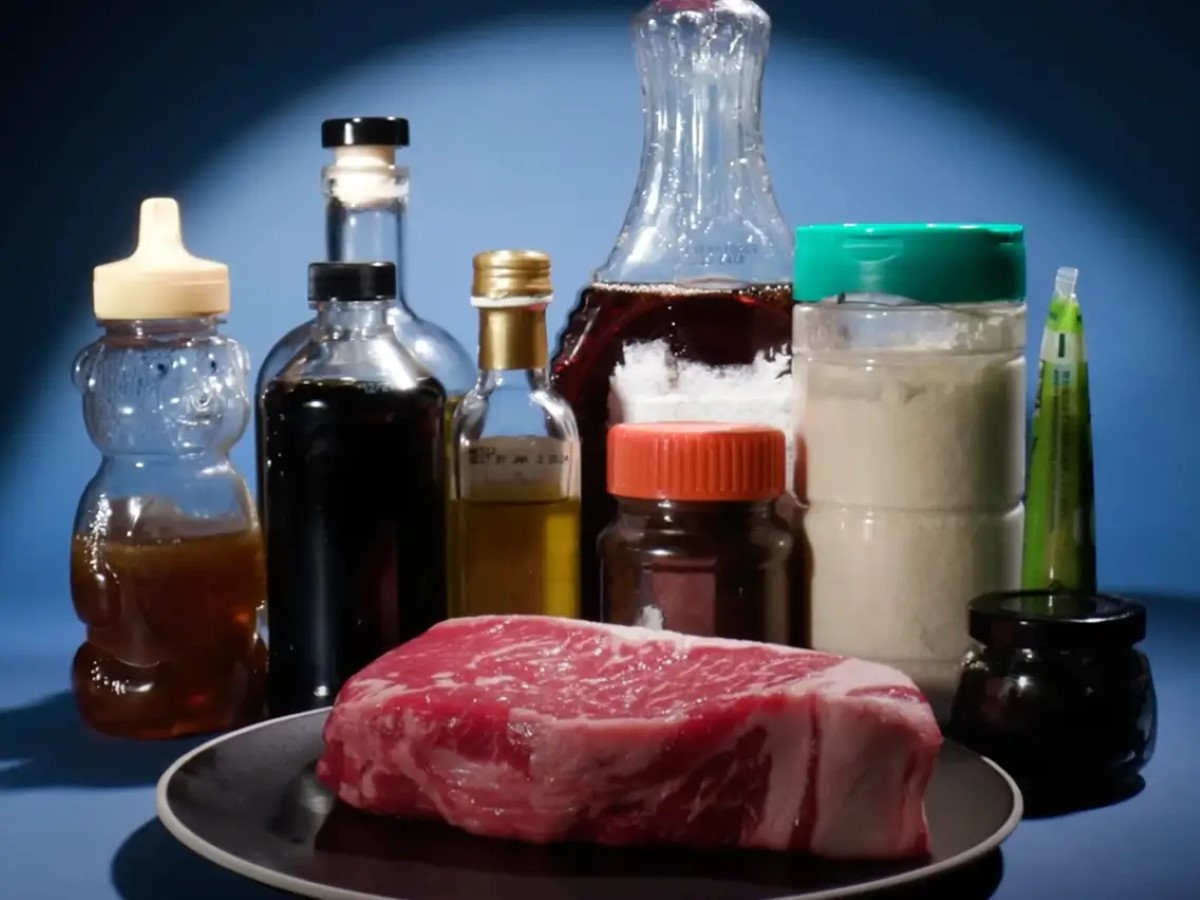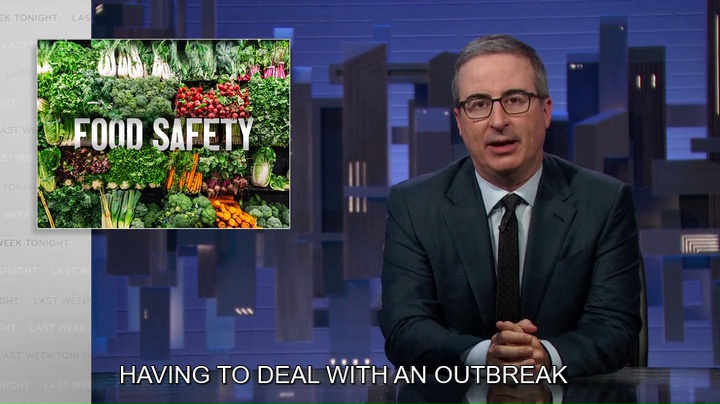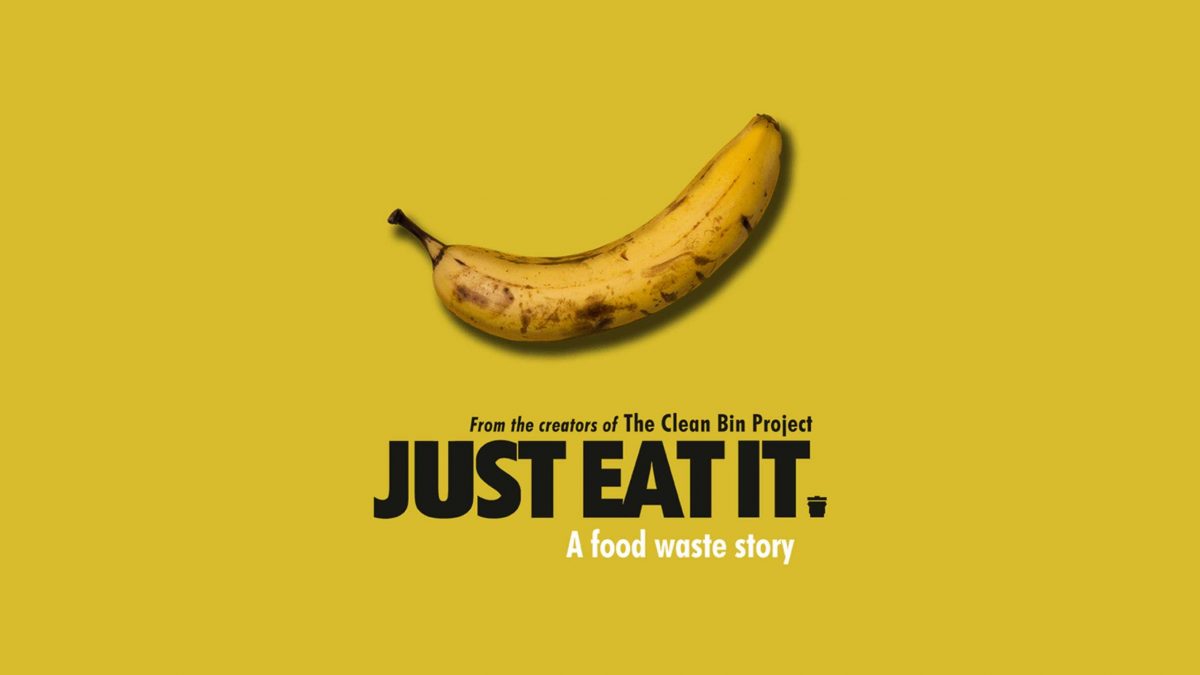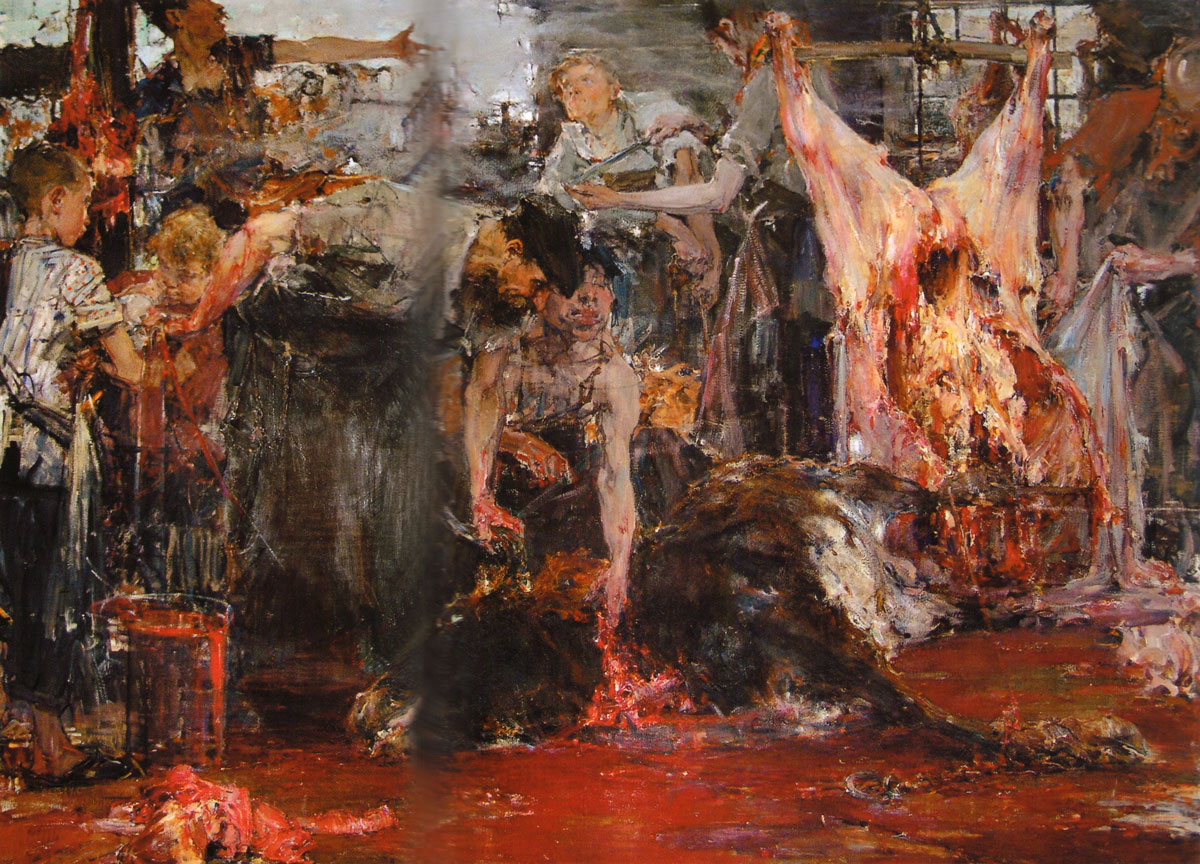by Eric Schlosser
The growth of the fast food chains has encouraged consolidation in the meatpacking industry. McDonald’s is the nation’s largest purchaser of beef. In 1968, McDonald’s bought ground beef from 175 local suppliers. A few years later, seeking to achieve greater product uniformity as it expanded, McDonald’s reduced the number of beef suppliers to five. Much like the french fry industry, the meatpacking industry has been transformed by mergers and acquisitions over the last twenty years. Many ranchers now argue that a few large corporations have gained a stranglehold on the market, using unfair tactics to drive down the price of cattle. Anger toward the large meatpackers is growing, and a new range war threatens to erupt, one that will determine the social and economic structure of the rural West.
A century ago, American ranchers found themselves in a similar predicament. The leading sectors of the nation’s economy were controlled by corporate alliances known as “trusts.” There was a Sugar Trust, a Steel Trust, a Tobacco Trust—and a Beef Trust. It set the prices offered for cattle. Ranchers who spoke out against this monopoly power were often blackballed, unable to sell their cattle at any price. In 1917, at the height of the Beef Trust, the five largest meatpacking companies—Armour, Swift, Morris, Wilson, and Cudahy—controlled about 55 percent of the market. The early twentieth century had trusts, but it also had “trustbusters,” progressive government officials who believed that concentrated economic power posed a grave threat to American democracy. The Sherman Antitrust Act had been passed in 1890 after a congressional investigation of price fixing in the meatpacking industry, and for the next two decades the federal government tried to break up the Beef Trust, with little success. In 1917 President Woodrow Wilson ordered the Federal Trade Commission to investigate the industry. The FTC inquiry concluded that the five major meatpacking firms had secretly fixed prices for years, had colluded to divide up markets, and had shared livestock information to guarantee that ranchers received the lowest possible price for their cattle. Afraid that an antitrust trial might end with an unfavorable verdict, the five meatpacking companies signed a consent decree in 1920 that forced them to sell off their stockyards, retail meat stores, railway interests, and livestock journals. A year later Congress created the Packers and Stockyards Administration (P&SA), a federal agency with a broad authority to prevent price-fixing and monopolistic behavior in the beef industry.
For the next fifty years, ranchers sold their cattle in a relatively competitive marketplace. The price of cattle was set through open bidding at auctions. The large meatpackers competed with hundreds of small regional firms. In 1970 the top four meatpacking firms slaughtered only 21 percent of the nation’s cattle. A decade later, the Reagan administration allowed these firms to merge and combine without fear of antitrust enforcement. The Justice Department and the P&SA’s successor, the Grain Inspection, Packers and Stockyards Administration (GIPSA), stood aside as the large meatpackers gained control of one local cattle market after another. Today the top four meatpacking firms—ConAgra, IBP, Excel, and National Beef—slaughter about 84 percent of the nation’s cattle. Market concentration in the beef industry is now at the highest level since record-keeping began in the early twentieth century.
* * *
You can smell Greeley, Colorado, long before you can see it. The smell is hard to forget but not easy to describe, a combination of live animals, manure, and dead animals being rendered into dog food. The smell is worst during the summer months, blanketing Greeley day and night like an invisible fog. Many people who live there no longer notice the smell; it recedes into the background, present but not present, like the sound of traffic for New Yorkers.
Others can’t stop thinking about the smell, even after years; it permeates everything, gives them headaches, makes them nauseous, interferes with their sleep. Greeley is a modern-day factory town where cattle are the main units of production, where workers and machines turn large steer into small, vacuum-sealed packages of meat. The billions of fast food hamburgers that Americans now eat every year come from places like Greeley. The industrialization of cattle-raising and meatpacking over the past two decades has completely altered how beef is produced—and the towns that produce it. Responding to the demands of the fast food and supermarket chains, the meatpacking giants have cut costs by cutting wages. They have turned one of the nation’s best-paying manufacturing jobs into one of the lowest-paying, created a migrant industrial workforce of poor immigrants, tolerated high injury rates, and spawned rural ghettos in the American heartland. Crime, poverty, drug abuse, and homelessness have lately taken root in towns where you’d least expect to find them. The effects of this new meatpacking regime have become as inescapable as the odors that drift from its feedlots, rendering plants, and pools of slaughterhouse waste.
Having broken the union at the Greeley slaughterhouse, Monfort1 began to employ a different sort of worker there: recent immigrants, many of them illegals. In the 1980s large numbers of young men and women from Mexico, Central America, and Southeast Asia started traveling to rural Colorado. Meatpacking jobs that had once provided a middle-class American life now offered little more than poverty wages. Instead of a waiting list, the slaughterhouse seemed to acquire a revolving door, as Monfort plowed through new hires to fill the roughly nine hundred jobs. During one eighteen-month period, more than five thousand different people were employed at the Greeley beef plant—an annual turnover rate of about 400 percent. The average worker quit or was fired every three months.
Today, roughly two-thirds of the workers at the beef plant in Greeley cannot speak English. Most of them are Mexican immigrants who live in places like the River Park Mobile Court, a collection of battered old trailers a quarter-mile down the road from the slaughterhouse. They share rooms in old motels, sleeping on mattresses that cover the floor. The basic pay at the slaughterhouse is now $9.25 an hour. Adjusted for inflation, today’s hourly wage is more than a third lower than what Monfort paid forty years ago when the plant opened. Health insurance is now offered to workers after six months on the job; vacation pay, after a year. But most of the workers will never get that vacation. A spokesman for ConAgra recently acknowledged that the turnover rate at the Greeley slaughterhouse is about 80 percent a year. That figure actually represents a decline from the early 1990s.
* * *
As in so many other aspects of meatpacking, IBP was a trailblazer in recruiting migrant labor. The company was among the first to recognize that recent immigrants would work for low er wages than American citizens—and would be more reluctant to join unions. To sustain the flow of new workers into IBP slaughterhouses, the company has for years dispatched recruiting teams to poor communities throughout the United States. It has recruited refugees and asylum- seekers from Laos and Bosnia. It has recruited homeless people living at shelters in New York, New Jersey, California, North Carolina, and Rhode Island. It has hired buses to import these workers from thousands of miles away. IBP now maintains a labor office in Mexico City, runs ads on Mexican radio stations offering jobs in the United States, and operates a bus service from rural Mexico to the heartland of America.
The Immigration and Naturalization Service estimates that about one-quarter of all meatpacking workers in Iowa and Nebraska are illegal immigrants. The proportion at some slaughterhouses can be much higher. Spokesmen for IBP and the ConAgra Beef Company adamantly deny that they in any way seek illegal immigrants. “We do not knowingly hire undocumented workers,” an IBP executive told me. “IBP supports INS efforts to enforce the law and do[es] not want to employ people who are not authorized to work in the United States.” Nevertheless, the recruiting efforts of the American meatpacking industry now target some of the most impoverished and most vulnerable groups in the Western Hemisphere, “If they’ve got a pulse,” one meatpacking executive joked to the Omaha World-Herald in 1998, “we’ll take an application.”
The real costs of this migrant industrial workforce are being borne not by the large meatpacking firms, but by the nation’s meatpacking communities. Poor workers without health insurance drive up local medical costs. Drug dealers prey on recent immigrants, and the large, transient population usually brings more crime. At times, the meatpacking firms have been especially brazen in assuming that public funds will cover their routine business costs. In September of 1994, GFI America, Inc.—a leading supplier of frozen hamburger patties to Dairy Queen, Cracker Barrel Old Country Store, and the federal school lunch program—needed workers for a plant in Minneapolis, Minnesota. It sent recruiters to Eagle Pass, Texas, near the Mexican border, promising steady work and housing. The recruiters hired thirty-nine people, rented a bus, drove the new workers from Texas to Minnesota, and then dropped them off across the street from People Serving People, a homeless shelter in downtown Minneapolis. Because the workers had no money, the shelter agreed to house them. GFI America offered to pay the facility $17 for each worker and to donate some free hamburgers, but the offer was declined. The company’s plan to use a homeless shelter as worker housing soon backfired. Most of the new recruits refused to stay at the shelter; they had been promised rental apartments and now felt tricked and misled. The story was soon picked up by the local media. Advocates for the homeless were especially angry about GFI America’s attempt to misuse the largest homeless shelter in Minneapolis. “Our job is not to provide subsidies to corporations that are importing low-cost labor,” said a county official.
* * *
A brief description of some cleaning-crew accidents over the past decade says more about the work and the danger than any set of statistics. At the Monfort plant in Grand Island, Nebraska, Richard Skala was beheaded by a dehiding machine. Carlos Vincente—an employee of T and G Service Company, a twenty-eight-year-old Guatemalan who’d been in the United States for only a week—was pulled into the cogs of a conveyer belt at an Excel plan in Fort Morgan, Colorado, and torn apart. Lorenzo Marin, Sr., an employee of DCS Sanitation, fell from the top of a skinning machine while cleaning it with a high-pressure hose, struck his head on the concrete floor of an IBP plant in Columbus Junction, Iowa, and died. Another employee of DCS Sanitation, Salvador Hernandez- Gonzalez, had his head crushed by a pork-loin processing machine at an IBP plant in Madison, Nebraska. The same machine had fatally crushed the head of another worker, Ben Barone, a few years earlier. At a National Beef plant in Liberal, Kansas, Homer Stull , climbed into a blood-collection tank to clean it, a filthy tank thirty feet high. Stull was overcome by hydrogen sulfide fumes. Two coworkers climbed into the tank and tried to rescue him. All three men died. Eight years earlier, Henry Wolf had been overcome by hydrogen sulfide fumes while cleaning the very same tank; Gary Sanders had tried to rescue him; both men died; and the Occupational Safety and Health Administration (OSHA) later fined National Beef for its negligence. The fine was $480 for each man’s death.
* * *
The meatpacking industry’s response to The Jungle established a pattern that would be repeated throughout the twentieth century, whenever health concerns were raised about the nation’s beef. The industry has repeatedly denied that problems exist, impugned the motives of its critics, fought vehemently against federal oversight, sought to avoid any responsibility for outbreaks of food poisoning, and worked hard to shift the costs of food safety efforts onto the general public. The industry’s strategy has been driven by a profound antipathy to any government regulation that might lower profits. “There is no limit to the expense that might be put upon us,” the Beef Trust’s Wilson said in 1906, arguing against a federal inspection plan that would have cost meatpackers less than a dime per head of cattle. “[Our] contention is that in all reasonableness and fairness we are paying all we care to pay.”
During the 1980s, as the risks of widespread contamination increased, the meatpacking industry blocked the use of microbial testing in the federal meat inspection program. A panel appointed by the National Academy of Sciences warned in 1985 that the nation’s meat inspection program was hopelessly outdated, still relying on visual and olfactory clues to find disease while dangerous pathogens slipped past undetected. Three years later, another National Academy of Sciences panel warned that the nation’s public health infrastructure was in serious disarray, limiting its ability to track or prevent the spread of newly emerging pathogens. Without additional funding for public health measures, outbreaks and epidemics of new diseases were virtually inevitable. “Who knows what crisis will be next?” said the chairman of the panel.
Nevertheless, the Reagan and Bush administrations cut spending on public health measures and staffed the U.S. Department of Agriculture with officials far more interested in government deregulation than in food safety. The USDA became largely indistinguishable from the industries it was meant to police. President Reagan’s first secretary of agriculture was in the hog business. His second was the president of the American Meat Institute (formerly known as the American Meat Packers Association). And his choice to run the USDA’s Food Marketing and Inspection Service was a vice president of the National Cattleman’s Association. President Bush later appointed the president of the National Cattleman’s Association to the job.
[1] Slaughterhouse in rural Greeley, Colorado, named after its owner, who broke the union following a 1979 strike by closing the plant and firing the workers. In 19S2 Monfort reopened without a union [Editor].
From Fast Food Nation: The Dark Side of the All-American Meal (Boston and New York: Houghton Mifflin Company, 2001), 136-38, 159-60, 162-63, 178, 205-06.




